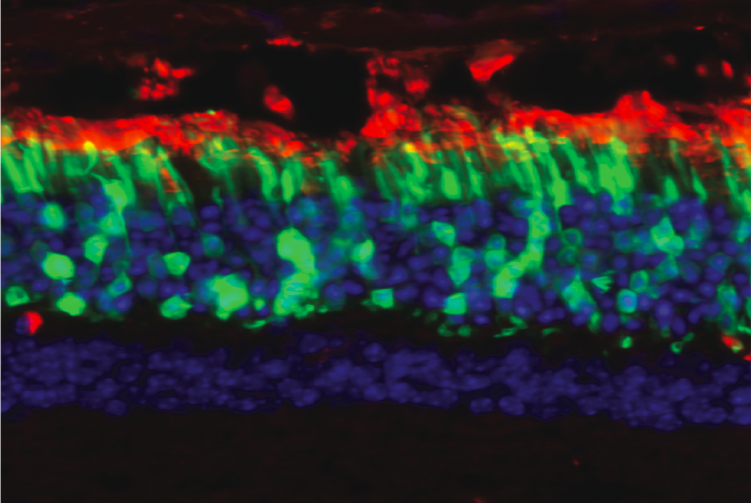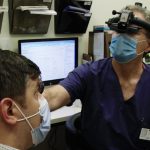A lab at Mass. Eye and Ear has shown that a CRISPR “trick” may be helpful in developing new treatments for inherited diseases — including retinitis pigmentosa.
With the dazzling power of the genome-editing tool CRISPR on display, researchers around the world have been hard at work in recent years — developing CRISPR-based therapies that may one day allow doctors to edit disease-causing mutations in our DNA for inherited disorders.
But there are still great challenges with this powerful tool, and many diseases — including dominantly inherited disorders, in which a single mutated copy of a gene causes disease, despite the presence of a healthy copy — have yet to be solved.

Allele-Specific CRISPR Editing
A research team led by Qin Liu, M.D., Ph.D., of the Ocular Genomics Institute at Mass. Eye and Ear, has shown that a CRISPR “trick” can edit just the mutated copy of a disease gene, leaving the healthy one alone. Published in the inaugural issue of The CRISPR Journal, Dr. Liu and her team reported that “allele-specific CRISPR editing” can preserve photoreceptors — or sensory cells of the retina that we need to be able to see properly — in a mouse model of a common form of dominantly inherited disease causing vision loss.
Dr. Liu’s research team concentrates on gene editing treatments for inherited eye diseases. But this proof-of-principle work could be applied to other inherited diseases as well.

Researcher’s Quick Take
When we discussed this study with Dr. Liu, she explained:
“Since the launch of CRISPR-Cas9, we have been exploring ways to harness its power for treating inherited retinal degenerations.” said Dr. Liu. “In many dominant forms of these diseases, the mutant copy differs from the healthy one in just one nucleotide, which presents tremendous challenge for Cas9 system to achieve specific editing. We went through a number of steps to optimize our editing system. Thanks to the modified version of Cas9 and the shortened version of guide RNA, both developed originally in our collaborator’s lab at Massachusetts General Hospital, we were pleased to see the preservation of photoreceptor cells in our mouse model. Though, we recognize that we still have a long way to go to translate this treatment to human patients.”
Read more about this groundbreaking study in coverage by STAT News.



I want my sister who has Retinitis Pigmentosa in this study.